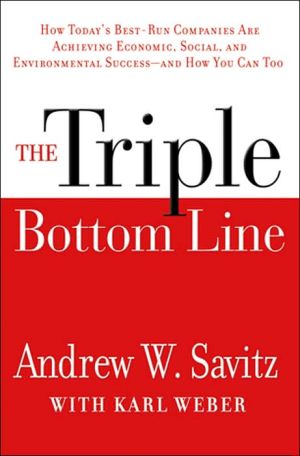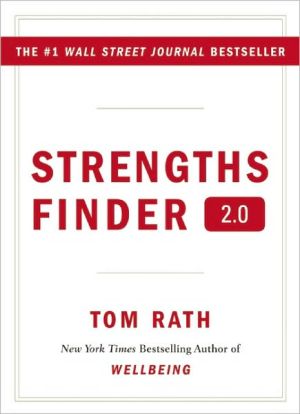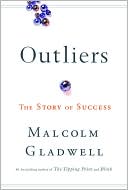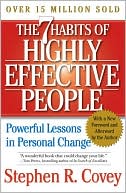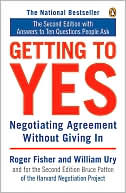The Triple Bottom Line: Why Sustainability is Transforming the Best-Run Companies and How It Can Work for You
Praise for The Triple Bottom Line\ "Whether you are a corporate manager, investor, consumer, or public official, this book will change your view of how corporations can succeed for themselves and for society. Savitz combines vision and practical advice in an elegant presentation."\ —George Stephanopoulos, chief Washington correspondent, ABC News anchor, This Week with George Stephanopoulos\ "Informative, persuasive, and practical, containing valuable advice for anyone seeking a more...
Search in google:
The Triple Bottom Line is the groundbreaking book that charts the rise of sustainability within the business world and shows how and why financial success increasingly goes hand in hand with social and environmental achievement. Andrew Savitz chronicles both the real problems that companies face and the innovative solutions that can come from sustainability. His is a hard-line approach to bottom-line fundamentals that is re-making companies around the globe. Soundveiw Review - Soundview Executive Book Summaries In a survey of 900 global corporations from PricewaterhouseCoopers in 2003, 80 percent of CEOs said they believe "sustainability" is or soon will be vital to the profitability of their company, and 71 percent said they would consider sacrificing short-term profits to move their company towards sustainability. The Triple Bottom Line takes a look at how businesses can prosper financially while protecting and renewing the social, environmental and economic resources they need - and how they can fail if they do not tend to those resources.The Sustainability Imperative and Accountability Practices that promote certain aspects of sustainability have been around for a long time. Some great companies have always tried to behave responsibly in terms of their resources and impacts. But the areas that make up today's sustainability movements-the environment, community relations, labor practices, social responsibility, and others-were historically seen in isolation from one another. There are scattered, disconnected anecdotes that describe pioneering efforts throughout history, but nothing worth holding up to today's standard. And this is a standard that must be met. The spread of freedom, the growth of a worldwide economy and business interdependence are all being driven by an astounding explosion of global communications advances. It is a socially conscious world as well. Today's 25-year-olds grew up watching the televised reports about Chernobyl, Exxon Valdez and other disasters. Accountability Backlash Ignore the cynics. Sustainability is not just "corporate hype." And despite the popular misconceptions, business leaders and managers do not have a legal obligation to maximize profits above all other concerns. Absent criminal conduct, fraud or negligence, if the shareholders are dissatisfied with the company's orientation toward profits, they can exercise their rights to change the board, oust management or sell their stock, but they can't sue. There is nothing illegal about managers' pursuing goals beyond profit. Your Sustainability Strategy To develop a sustainability program, you should examine your overall corporate strategy to identify the sweet spot where strategy and sustainability meet. For example, consider a company targeting personal care products as a growth opportunity. Because of the health benefits of soap, shampoo and toothpaste, the sweet spot is obvious. Finally, a sustainability strategy can protect a company from unseen risk. When low rainfall in Kerala, India, caused a water shortage in 2002, political activists staged protests against both Coca-Cola and Pepsi plants in the city. These protests didn't stop, even after a Pepsi hydrogeologists proved their water draws were coming from another location. And media firms like Disney, Time Warner, Viacom and GE are currently being targeted in a campaign launch by the University of California-San Francisco Center for Tobacco Control Research and Education, endorsed by the World Health Organization. Stories like these can be told about many companies. A systematic approach to sustainability and shareholder engagement will enable forward-looking companies and managers to see beyond the horizon and recognize new forms of risks before they strike. Launching Your Program There's no single correct starting point to launch a sustainability program, but starting with a strategy is an excellent approach. The first step is often by a division, department or plant led by a manager who sees a compelling business need and understands the potential value of sustainability earlier than others and middle managers can also play their part in the early stages. Start by doing some of the following: Look at your customers' needs Work with your supply chain Leverage your current position Start with your current skill set Anticipate an impending change Empower individuals Managing Stakeholder Engagement Taking a fresh look at yourself and your company is one of the many concrete benefits you can derive from stakeholder engagement-provided that you enjoy real rather than sham engagement. It's not about pretending to listen to your stakeholders. Many advocacy groups feel they are saving the world and their favored issue is of paramount importance to that salvation. When confronting these stakeholders, you should present your side of the issues frankly and nondefensively. Stakeholder mapping allows you to identify true stakeholders, what it is that they care about and how you prioritize them. Creating a culture of Sustainability Becoming a sustainable enterprise isn't just a matter of placing an overlay on top of your conventional business thinking. It entails making a shift from an old way of thinking to a new one - a new mind-set that subtly or dramatically alters everything you see and do. Copyright © 2006 Soundview Executive Book Summaries
1Selling Hershey : a business fable for our times32The sustainability sweet spot : how to achieve long-term business success213The age of accountability414Business responds655Embracing accountability776The backlash against sustainability937Renewing the penobscot : "a more productive use of capital"1058Where do you stand today? : your self-assessment1299Shaping your sustainability strategy14510Launching your sustainability program16311Managing stakeholder engagement17712Dealing with special stakeholder challenges19113Measuring and reporting your progress20914Creating a culture of sustainability227Epilogue : the future of sustainability235
\ Soundview Executive Book SummariesIn a survey of 900 global corporations from PricewaterhouseCoopers in 2003, 80 percent of CEOs said they believe “sustainability” is or soon will be vital to the profitability of their company, and 71 percent said they would consider sacrificing short-term profits to move their company towards sustainability. The Triple Bottom Line takes a look at how businesses can prosper financially while protecting and renewing the social, environmental and economic resources they need - and how they can fail if they do not tend to those resources.\ The Sustainability Imperative and Accountability\ Practices that promote certain aspects of sustainability have been around for a long time. Some great companies have always tried to behave responsibly in terms of their resources and impacts. But the areas that make up today's sustainability movements—the environment, community relations, labor practices, social responsibility, and others—were historically seen in isolation from one another. There are scattered, disconnected anecdotes that describe pioneering efforts throughout history, but nothing worth holding up to today's standard.\ And this is a standard that must be met. The spread of freedom, the growth of a worldwide economy and business interdependence are all being driven by an astounding explosion of global communications advances. It is a socially conscious world as well. Today's 25-year-olds grew up watching the televised reports about Chernobyl, Exxon Valdez and other disasters.\ Accountability Backlash\ Ignore the cynics. Sustainability is not just “corporate hype.” And despite the popular misconceptions, business leaders and managers do not have a legal obligation to maximize profits above all other concerns. Absent criminal conduct, fraud or negligence, if the shareholders are dissatisfied with the company's orientation toward profits, they can exercise their rights to change the board, oust management or sell their stock, but they can't sue. There is nothing illegal about managers' pursuing goals beyond profit.\ Your Sustainability Strategy\ To develop a sustainability program, you should examine your overall corporate strategy to identify the sweet spot where strategy and sustainability meet. For example, consider a company targeting personal care products as a growth opportunity. Because of the health benefits of soap, shampoo and toothpaste, the sweet spot is obvious.\ Finally, a sustainability strategy can protect a company from unseen risk. When low rainfall in Kerala, India, caused a water shortage in 2002, political activists staged protests against both Coca-Cola and Pepsi plants in the city. These protests didn't stop, even after a Pepsi hydrogeologists proved their water draws were coming from another location. And media firms like Disney, Time Warner, Viacom and GE are currently being targeted in a campaign launch by the University of California-San Francisco Center for Tobacco Control Research and Education, endorsed by the World Health Organization. Stories like these can be told about many companies. A systematic approach to sustainability and shareholder engagement will enable forward-looking companies and managers to see beyond the horizon and recognize new forms of risks before they strike.\ Launching Your Program There's no single correct starting point to launch a sustainability program, but starting with a strategy is an excellent approach. The first step is often by a division, department or plant led by a manager who sees a compelling business need and understands the potential value of sustainability earlier than others and middle managers can also play their part in the early stages.\ Start by doing some of the following:\ \ Look at your customers' needs\ Work with your supply chain\ Leverage your current position\ Start with your current skill set\ Anticipate an impending change\ Empower individuals\ \ \ \ \ Managing Stakeholder Engagement\ Taking a fresh look at yourself and your company is one of the many concrete benefits you can derive from stakeholder engagement—provided that you enjoy real rather than sham engagement. It's not about pretending to listen to your stakeholders.\ Many advocacy groups feel they are saving the world and their favored issue is of paramount importance to that salvation. When confronting these stakeholders, you should present your side of the issues frankly and nondefensively.\ Stakeholder mapping allows you to identify true stakeholders, what it is that they care about and how you prioritize them.\ Creating a culture of Sustainability\ Becoming a sustainable enterprise isn't just a matter of placing an overlay on top of your conventional business thinking. It entails making a shift from an old way of thinking to a new one - a new mind-set that subtly or dramatically alters everything you see and do. Copyright © 2006 Soundview Executive Book Summaries\ \ —Soundveiw Review\ \
